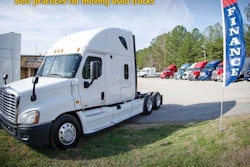CliftonLarsonAllen (CLA) has produced a document to better educate the heavy-duty dealer market on federal excise tax (FET) and its related 75 percent safe harbor provision.
Written by CLA Principal Tim Reynolds, the document addresses the recently released IRS Notice 2017-5, previously titled 2016-81, which provides interim guidance and specific definitions of the terms “chassis” and “body” in the application of the safe harbor provision. Reynolds says the IRS notice is helpful, but CLA believes clearer definitions will ultimately cast a wider net to capture more articles subject to FET.
He says this is important because the definition of chassis means components can’t be mixed up.
“Until now, neither the Internal Revenue Code nor federal regulations had clearly defined ‘chassis’ or ‘body’ for determining which articles are subject to FET or when applying the 75 percent safe harbor provision,” Reynolds says.
Now, he says Notice 2017-5 defines them as follows:
- Chassis: A vehicle’s frame, supporting structure, and all components that are attached to it, except those items that are explicitly exempt, such as certain idling reduction devices. The IRS also defined chassis “components” and provided a nonexclusive list of examples, such as the engine, axles, transmission, drive train, suspension, cab, and exhaust after-treatment system (which includes the diesel particulate filter).
- Body: The cargo or load-carrying structure of a truck, trailer, or semitrailer. Examples of a body thereby include a flatbed body, tanker, and a box body.
For more from Reynolds on these decisions and their impact on your business, please CLICK HERE.









